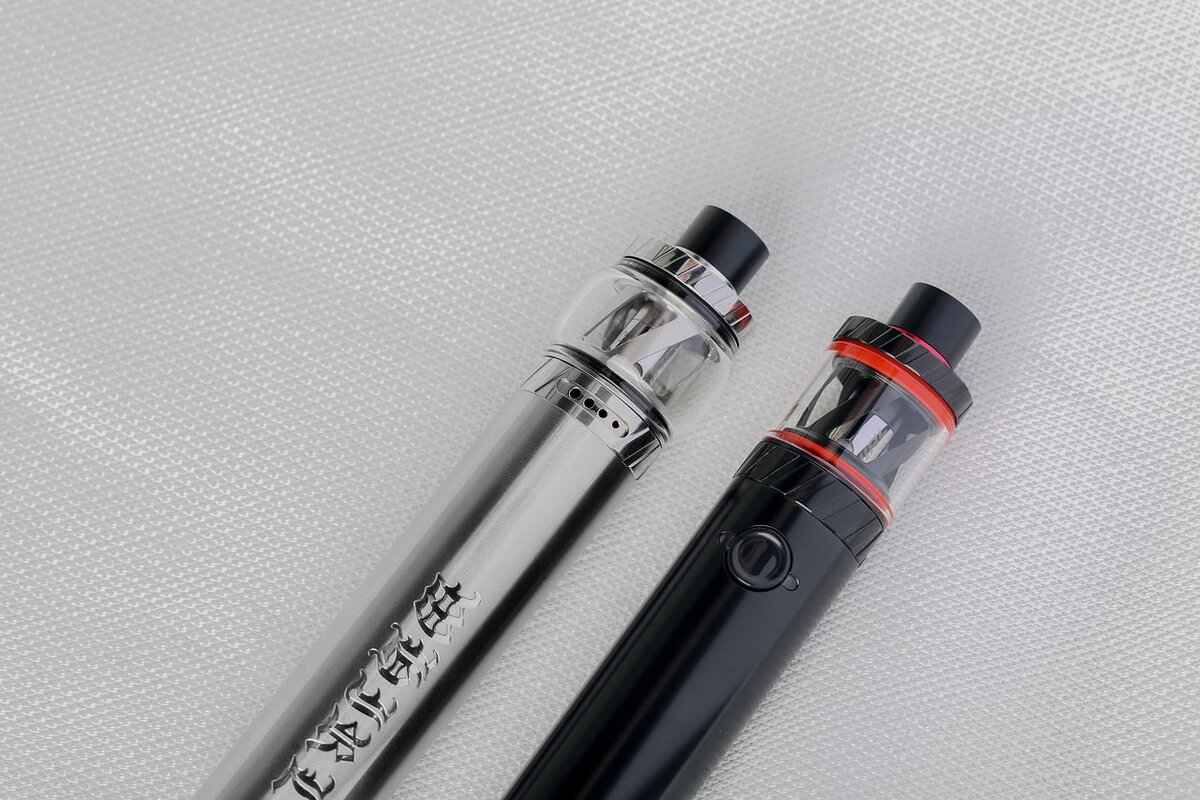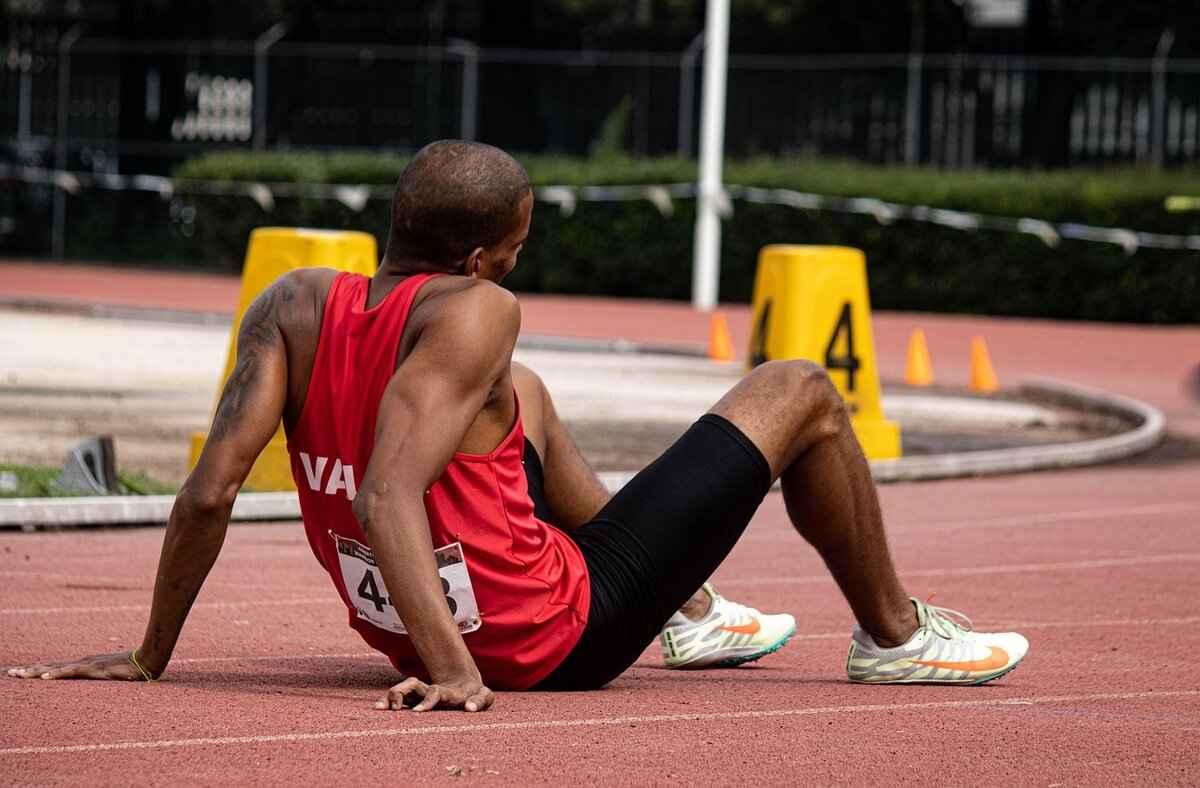This article delves into the implications of vaping on professional athletic performance, health, and regulations, providing essential insights for athletes contemplating the use of e-cigarettes. As the popularity of vaping continues to rise, it is crucial for athletes to understand its potential impact on their bodies and careers.
Vaping refers to the act of inhaling vapor produced by electronic cigarettes or vape pens. These devices heat a liquid, often containing nicotine, flavorings, and other chemicals, transforming it into vapor. For athletes, understanding the mechanics of vaping is vital in assessing its potential health risks and effects on performance.
While some may view vaping as a safer alternative to smoking, athletes must recognize the associated health risks. Respiratory issues and cardiovascular effects are significant concerns that can hinder performance and recovery. The inhalation of vapor can lead to inflammation, which may decrease lung capacity—an essential factor for athletes who rely on optimal respiratory function.
Research indicates that vaping can lead to decreased lung function due to inflammation and irritation of the airways. For athletes, maintaining peak lung capacity is crucial for endurance and overall performance. Any compromise in respiratory health can directly affect training and competition outcomes.
The chemicals found in vape liquids can adversely affect heart health, increasing the risk of conditions such as hypertension and arrhythmias. These cardiovascular issues can jeopardize an athlete’s career, making it essential to consider the long-term implications of vaping.
Some athletes argue that vaping may assist in stress relief or serve as a tool for smoking cessation. However, these perceived benefits must be weighed against the potential health risks. It’s important to approach vaping with caution, especially considering the long-term effects that remain largely unknown.
For athletes attempting to quit smoking, vaping may provide a less harmful alternative. While it can help reduce cravings for nicotine, the effectiveness and safety of vaping as a cessation tool are still under scrutiny.
Some athletes report a sense of relaxation from vaping. However, the psychological effects can vary significantly among individuals. Relying on vaping for stress relief may lead to dependency, which could further complicate an athlete’s mental health.
The impact of vaping on athletic performance can vary widely among individuals. While some athletes may notice reduced stamina, others might not experience any significant effects. This variability highlights the need for personal assessment and understanding of one’s body.
Many sports organizations have begun to address the issue of vaping within their regulations, reflecting growing concerns about health and fairness in competition. As awareness increases, these organizations are taking steps to protect athletes from the potential dangers associated with vaping.
Some sports leagues have implemented bans on vaping during competitions, similar to traditional smoking regulations. These measures aim to promote athlete health and uphold the integrity of sports.
Educational programs focusing on the dangers of vaping are becoming increasingly common. These initiatives aim to equip athletes with the knowledge necessary to make informed choices regarding their health and performance.
Exploring healthier alternatives can help athletes manage stress and promote recovery without the risks associated with vaping. Options such as nutrition and mindfulness practices can provide effective solutions.
Proper nutrition is essential for recovery, providing athletes with the necessary nutrients to support performance and overall health. A balanced diet can help alleviate stress and improve physical well-being without the drawbacks of vaping.
Mindfulness techniques, such as meditation and yoga, can offer significant benefits for athletes. These practices provide stress relief and mental clarity, serving as effective alternatives to vaping while promoting overall health.

What Is Vaping and How Does It Work?
Vaping has become a prevalent practice among various demographics, including athletes. It involves the inhalation of vapor produced by electronic cigarettes or similar devices. Understanding the mechanics of vaping is crucial for athletes, as it allows them to assess its potential impact on both their health and athletic performance.
At its core, vaping uses a battery-powered device to heat a liquid, often referred to as e-liquid or vape juice, which typically contains nicotine, flavorings, and other chemicals. This process generates an aerosol, commonly called vapor, that is inhaled into the lungs. Unlike traditional cigarettes, which burn tobacco, vaping does not involve combustion, which can lead to a perception that it is a safer alternative. However, the absence of smoke does not equate to the absence of health risks.
Understanding how vaping works is essential for athletes who may consider its use. The mechanics involve several key components:
- Battery: Powers the device and heats the coil.
- Atomizer: Heats the e-liquid to create vapor.
- Tank or Cartridge: Holds the e-liquid.
- Drip Tip: The mouthpiece through which the user inhales the vapor.
When an athlete inhales from a vaping device, the heated e-liquid turns into vapor, which is then delivered into the lungs. The rapid absorption of nicotine and other substances can lead to immediate effects, such as increased heart rate and altered mood. For athletes, these effects can be double-edged swords. While some may seek the quick boost in focus or energy, the long-term implications on health and performance are significant.
Research indicates that the ingredients in e-liquids, such as propylene glycol and vegetable glycerin, can cause irritation to the respiratory system. This is particularly concerning for athletes who rely on optimal lung function for endurance and performance. Furthermore, the presence of nicotine can lead to increased heart rate and potential cardiovascular strain, which could hinder athletic performance.
In summary, while vaping may seem like a modern alternative to smoking, its mechanics and potential health impacts warrant careful consideration by athletes. Understanding how vaping works allows athletes to make informed decisions regarding its use and its possible effects on their health and performance.

What Are the Health Risks of Vaping for Athletes?
As the popularity of vaping continues to rise, athletes must be vigilant about its potential health risks. Understanding the implications of vaping is crucial for maintaining peak performance and overall well-being. This section delves into the various health risks associated with vaping, particularly focusing on respiratory and cardiovascular issues that can significantly hinder athletic performance and recovery.
Vaping is often perceived as a safer alternative to traditional smoking, but athletes should be aware of the serious health risks it poses. The inhalation of vapor from e-cigarettes can lead to a myriad of health complications that directly affect athletic performance.
- Respiratory Issues: Vaping can cause inflammation in the lungs, leading to decreased lung capacity. This is particularly detrimental for athletes who rely on optimal respiratory function for endurance and performance. Chronic inflammation can manifest as shortness of breath, which may hinder an athlete’s ability to perform at their best.
- Cardiovascular Effects: The chemicals found in vape liquids, such as nicotine and various flavoring agents, can have adverse effects on heart health. Studies have shown that these substances can increase heart rate and blood pressure, leading to an elevated risk of cardiovascular diseases. For athletes, this not only jeopardizes their health but can also shorten their careers.
- Delayed Recovery: Vaping may impair recovery times between training sessions or competitions. The body requires efficient oxygen delivery and nutrient absorption to recover properly, and any compromise in lung function can prolong recovery periods, affecting an athlete’s training schedule.
- Potential for Addiction: Many e-cigarettes contain nicotine, a highly addictive substance. Athletes who start vaping may find themselves struggling with dependency, which can lead to withdrawal symptoms that negatively impact their mental and physical performance.
It is essential for athletes to recognize that the consequences of vaping are not merely theoretical. Numerous studies have documented the real-world effects of e-cigarette use on health, emphasizing the need for informed decision-making.
To safeguard their health, athletes should consider the following strategies:
- Education: Athletes must educate themselves about the risks associated with vaping. Understanding the potential health implications can empower them to make informed choices.
- Open Dialogue: Engaging in conversations with coaches, trainers, and health professionals about vaping can provide valuable insights and alternative coping mechanisms for stress management.
- Seek Alternatives: Exploring healthier alternatives to vaping, such as mindfulness practices, exercise, and proper nutrition, can help athletes manage stress without compromising their health.
In conclusion, while vaping may seem like a trendy option for relaxation or stress relief, athletes must weigh these perceived benefits against the significant health risks it poses. By prioritizing their health and performance, athletes can make choices that support their long-term success in their respective sports.
How Does Vaping Affect Lung Function?
Vaping has become a common practice among many individuals, including athletes who may underestimate its impact on their health. One of the most critical areas affected by vaping is lung function. Understanding how vaping influences respiratory health is essential for athletes who rely on optimal pulmonary function for their performance.
When athletes inhale vapor from e-cigarettes, they expose their lungs to a mixture of chemicals, including nicotine, flavorings, and other additives. These substances can lead to inflammation in the airways, which can significantly hinder an athlete’s ability to perform at their best. Inflammation is the body’s response to harmful stimuli, and in the lungs, it can cause symptoms such as coughing, wheezing, and shortness of breath.
For athletes, decreased lung capacity due to inflammation can result in reduced endurance and performance. When the lungs are inflamed, the airways become narrower, making it difficult to take in enough oxygen during intense physical activity. This can lead to premature fatigue and hinder recovery times, which are crucial for athletes aiming to excel in their respective sports.
Research suggests that long-term vaping may lead to chronic respiratory conditions, such as bronchitis and even chronic obstructive pulmonary disease (COPD). These conditions can severely limit lung function and overall athletic performance. Athletes should consider that the ramifications of vaping extend beyond immediate effects, potentially impacting their careers in the long run.
While vaping is often marketed as a safer alternative to traditional smoking, it is essential to recognize that both practices can lead to significant lung damage. However, vaping can deliver higher concentrations of nicotine and other harmful substances directly into the lungs, which can exacerbate inflammation and impair lung capacity even further.
Athletes must weigh the potential risks of vaping against any perceived benefits. The allure of vaping may stem from its perceived stress-relieving properties or as a tool for quitting smoking. However, the potential for decreased lung function and increased inflammation can outweigh these short-term benefits. Athletes should seek healthier alternatives for stress management and recovery.
Experts recommend that athletes avoid vaping altogether to maintain optimal lung health. Instead, they should focus on breathing exercises and other methods to enhance lung function. Engaging in activities that promote lung health, such as aerobic exercises, can help counteract some of the negative effects of vaping.
- Engage in Regular Cardiovascular Exercise: Activities like running, swimming, or cycling can strengthen the lungs.
- Practice Breathing Techniques: Techniques such as diaphragmatic breathing can enhance lung capacity.
- Maintain a Healthy Diet: Foods rich in antioxidants can help combat inflammation.
- Avoid Pollutants: Minimizing exposure to air pollution and secondhand smoke can protect lung health.
In summary, the effects of vaping on lung function can be detrimental, particularly for athletes who depend on their respiratory systems for peak performance. It is crucial for athletes to stay informed about the health risks associated with vaping and to consider healthier alternatives for stress relief and recovery.
Can Vaping Impact Cardiovascular Health?
Vaping has become increasingly popular among various demographics, including athletes, who often seek alternatives to traditional smoking. However, the health implications of vaping, particularly concerning cardiovascular health, are a growing concern. Understanding how vaping can impact heart health is crucial for athletes who aim to maintain peak performance and longevity in their careers.
Vape liquids, also known as e-liquids, contain a mixture of substances, including nicotine, flavorings, and other chemicals. While nicotine is the most well-known ingredient, many other compounds can contribute to adverse health effects. These chemicals can lead to inflammation and oxidative stress, which are detrimental to cardiovascular health.
The chemicals in vape liquids may adversely affect heart health, increasing the risk of heart conditions that can jeopardize an athlete’s career. Studies have shown that vaping can lead to increased heart rate and blood pressure, which are significant risk factors for cardiovascular disease. Additionally, the inhalation of harmful substances can cause endothelial dysfunction, a precursor to heart disease.
While the long-term effects of vaping are still being studied, early evidence suggests that continuous exposure to the chemicals found in vape liquids can lead to chronic cardiovascular problems. Athletes who rely on their cardiovascular systems for performance may find that vaping compromises their endurance and overall heart function.
Research indicates that the use of e-cigarettes may be linked to an increased risk of developing heart disease. This risk is particularly concerning for athletes, as heart conditions can lead to serious health issues and even career-ending consequences. The potential for developing atherosclerosis, or hardening of the arteries, is heightened with regular vaping.
- Health Risks: Athletes should weigh the potential health risks associated with vaping against their performance goals.
- Regulatory Concerns: Many sports organizations are beginning to address vaping in their regulations, which could impact an athlete’s eligibility.
- Alternative Stress Relief: Athletes may benefit from exploring healthier stress-relief methods that do not compromise their cardiovascular health.
For athletes looking to manage stress or quit smoking, there are numerous alternatives to vaping that pose less risk to cardiovascular health. Engaging in activities such as exercise, meditation, and yoga can provide significant benefits without the adverse effects associated with vaping. Additionally, focusing on nutrition and hydration can support overall well-being and athletic performance.
Maintaining heart health is crucial for athletes. Regular cardiovascular exercise, a balanced diet rich in antioxidants, and avoiding harmful substances like nicotine can significantly reduce the risk of heart issues. Athletes should also consider regular check-ups with healthcare professionals to monitor their cardiovascular health, especially if they have been exposed to vaping.
In conclusion, while vaping may seem like a less harmful alternative to smoking, its potential impact on cardiovascular health poses significant risks for athletes. Understanding these risks is essential for making informed decisions that prioritize long-term health and performance.

Are There Any Benefits of Vaping for Athletes?
In recent years, the topic of vaping has gained significant traction, particularly among athletes. While traditional smoking has long been recognized as detrimental to athletic performance and overall health, some athletes advocate for vaping as a potential alternative. This raises an important question: In this section, we will explore the arguments surrounding vaping, particularly its perceived advantages in stress relief and smoking cessation, while also considering the associated health risks.
Many athletes encounter high levels of stress due to the pressures of competition, training, and maintaining peak performance. Some proponents of vaping claim that it can serve as a form of stress relief. The act of inhaling and exhaling vapor can provide a momentary escape, allowing athletes to unwind. However, it is crucial to note that the relaxation effect is often psychological and may vary significantly among individuals. Relying on vaping for stress management could potentially lead to dependency, which may create more problems than it solves.
For athletes who have been long-term smokers, vaping is frequently touted as a less harmful alternative to traditional cigarettes. Some studies suggest that e-cigarettes can help smokers gradually reduce their nicotine intake and ultimately quit. However, the long-term effects of vaping remain largely unknown. While it may assist in the transition away from smoking, athletes should be cautious and aware that vaping still poses health risks. Transitioning to vaping does not guarantee a healthier lifestyle and may lead to new challenges.
Despite the perceived benefits, athletes must consider the health risks associated with vaping. Research has indicated that vaping can lead to respiratory issues, including inflammation and decreased lung capacity, which are detrimental to athletic performance. Additionally, the chemicals found in vape liquids may adversely affect cardiovascular health, increasing the risk of heart conditions that could jeopardize an athlete’s career.
The effects of vaping on athletic performance can be mixed. While some athletes report no noticeable impact, others may experience reduced stamina and endurance. This inconsistency highlights the need for individual assessment. Athletes should carefully evaluate how vaping affects their own performance, as the implications can vary widely from one person to another.
Health professionals and sports organizations are increasingly addressing the topic of vaping. Many experts caution against its use, emphasizing the importance of maintaining optimal health for peak performance. Athletes are encouraged to seek healthier alternatives for stress relief and recovery, such as mindfulness practices and proper nutrition.
Instead of turning to vaping, athletes can explore various healthier options for managing stress and enhancing recovery.
- Mindfulness and Meditation: Techniques such as meditation and yoga can provide effective stress relief, promoting mental clarity and emotional balance.
- Physical Activity: Engaging in light physical activities can help alleviate stress while contributing to overall well-being.
- Nutrition: A balanced diet rich in nutrients supports recovery and performance, ensuring athletes remain in optimal condition.
In conclusion, while some athletes argue that vaping can aid in stress relief or assist in quitting smoking, these benefits must be carefully weighed against the potential health risks. The long-term effects of vaping remain uncertain, and athletes should prioritize their health and performance by considering healthier alternatives.
Can Vaping Aid in Quitting Traditional Smoking?
For many athletes, the journey to quitting smoking can be a daunting challenge. The addictive nature of nicotine can make it difficult to break free from traditional cigarettes. In recent years, vaping has emerged as a potential alternative for those seeking to quit smoking. This article delves into whether vaping can truly aid in quitting traditional smoking, its potential benefits, and the risks involved.
Vaping involves inhaling vapor produced by electronic cigarettes, which typically contain nicotine, flavorings, and other chemicals. For athletes, the idea of using vaping as a cessation tool may seem appealing, as it allows them to satisfy their nicotine cravings without the harmful tar and chemicals found in traditional cigarettes. However, it is essential to understand how vaping works and its implications for health.
One of the primary reasons athletes consider vaping is its potential to help manage nicotine cravings. Many e-liquids are available in various nicotine strengths, allowing users to gradually decrease their intake. This gradual reduction can make the process of quitting less overwhelming. However, while some studies suggest that vaping may help some individuals reduce their dependence on nicotine, the long-term effects of vaping remain uncertain.
While vaping is often marketed as a safer alternative to smoking, it is not without its risks. Athletes must be aware of the potential health implications, including:
- Respiratory Issues: Vaping can cause inflammation and irritation in the lungs, which may hinder athletic performance.
- Cardiovascular Effects: The chemicals in vape liquids can negatively impact heart health, posing risks for athletes.
- Dependency Risks: Some individuals may find themselves developing a new dependency on vaping, which could lead to a cycle of addiction.
Many athletes report using vaping as a means to alleviate stress. The act of vaping can provide a momentary distraction and a sense of relaxation. However, it’s important to note that reliance on vaping for stress relief may lead to dependency. Athletes should consider alternative methods for managing stress, such as mindfulness practices, meditation, or physical activities that promote mental well-being.
Experts are divided on the effectiveness of vaping as a smoking cessation tool. While some studies indicate that vaping can help smokers quit or reduce their cigarette consumption, others warn about the potential for long-term health risks associated with vaping. The consensus is that more research is needed to fully understand the implications of using e-cigarettes as a cessation aid.
Athletes seeking to quit smoking have several alternatives to consider:
- Nicotine Replacement Therapy: Options like patches, gum, or lozenges can help manage cravings without the risks associated with vaping.
- Counseling and Support Groups: Professional support can provide athletes with the tools needed to quit smoking effectively.
- Healthy Lifestyle Changes: Engaging in regular exercise and maintaining a balanced diet can improve overall health and reduce the urge to smoke.
In conclusion, while vaping may serve as a less harmful alternative for some athletes looking to quit smoking, it is essential to weigh the potential benefits against the health risks. The journey to quitting smoking is a personal one, and athletes should explore all available options to find the best path for their health and performance.
Does Vaping Provide a Relaxation Effect?
In the realm of athletics, where performance and mental clarity are paramount, the question arises: While some athletes have reported feelings of relaxation after vaping, the psychological effects can significantly vary from person to person. Understanding these nuances is crucial for athletes considering the use of e-cigarettes as a means of stress relief.
Vaping involves inhaling vapor produced by electronic cigarettes, which often contain nicotine and other substances. For some athletes, the act of vaping may serve as a momentary escape from the pressures of competition and training. Nicotine has been known to provide a quick boost in mood and relaxation, which can be appealing in high-stress environments. However, this perceived benefit comes with a caveat: reliance on vaping can lead to dependency.
Dependency on vaping may develop as athletes start to associate the act of vaping with relaxation and stress relief. This can create a cycle where the athlete feels compelled to vape in order to manage anxiety or pressure, potentially leading to increased consumption over time. As the dependency grows, the athlete may find it increasingly difficult to perform without vaping, which could hinder their overall performance and mental focus.
Moreover, the relaxation effect reported by some athletes may not be universally beneficial. The psychological impact of vaping can vary widely, with some individuals experiencing heightened anxiety or stress when they are unable to vape. This inconsistency can pose risks, particularly in competitive settings where mental clarity and focus are essential.
Additionally, the long-term effects of vaping on mental health are still not fully understood. While it may provide short-term relief, the potential for negative consequences on both physical and psychological health cannot be overlooked. Research has shown that the chemicals in vape liquids can have adverse effects on the brain, leading to issues such as mood swings and increased anxiety levels.
To further complicate matters, athletes must also consider the impact of vaping on their physical health. As previously discussed, vaping can lead to respiratory issues and cardiovascular problems, which can ultimately affect an athlete’s performance. The pursuit of relaxation through vaping may inadvertently compromise their overall well-being.
In light of these factors, athletes are encouraged to explore healthier alternatives for managing stress and promoting relaxation. Practices such as mindfulness meditation, deep breathing exercises, and yoga can provide effective stress relief without the potential drawbacks associated with vaping. These methods not only enhance relaxation but also contribute positively to an athlete’s physical and mental health.
Ultimately, while some athletes may find temporary relaxation in vaping, the risks associated with dependency and the potential for negative health effects warrant careful consideration. Athletes should weigh the short-term benefits against the long-term consequences and seek healthier coping mechanisms to ensure they maintain peak performance and overall well-being.

How Does Vaping Influence Athletic Performance?
Vaping has become a prevalent topic of discussion in the world of sports, particularly regarding its impact on athletic performance. As athletes strive for peak performance, understanding how vaping may influence their physical capabilities is crucial. The effects of vaping are not uniform; they can vary significantly among individuals, leading to a spectrum of experiences and outcomes.
The influence of vaping on athletic performance is highly individualistic. Some athletes report a decline in their stamina and endurance, while others experience no noticeable effects. This disparity underscores the importance of personal assessment when considering the use of e-cigarettes. Factors such as an athlete’s overall health, the frequency of vaping, and the specific substances inhaled can all play vital roles in determining how vaping impacts their performance.
Research indicates that vaping can lead to respiratory issues, which are particularly detrimental for athletes who rely on optimal lung function. Inhaling vapor can cause inflammation in the airways, leading to a decrease in lung capacity. For endurance athletes, such as runners or cyclists, this reduction can mean the difference between achieving personal bests and struggling to complete a race.
Another critical aspect of vaping’s impact on performance is its potential cardiovascular effects. The chemicals found in vape liquids may impair heart function, which is essential for delivering oxygen to muscles during intense physical activity. Athletes with compromised cardiovascular health may find their performance hindered, particularly in high-stakes competitions where every second counts.
While some athletes claim that vaping helps them manage stress and anxiety, the psychological effects can be inconsistent. The reliance on vaping for relaxation may lead to a form of dependency, which can detract from an athlete’s mental fortitude. Athletes must weigh the potential psychological benefits against the physical risks to determine if vaping is a viable option for them.
The long-term implications of vaping on athletic performance remain largely unknown. While some athletes may not feel immediate adverse effects, the cumulative impact of inhaling vapor over time could lead to significant health issues that ultimately affect performance. Regular health assessments and open discussions with medical professionals are essential for athletes who choose to vape.
For athletes who are looking to quit traditional smoking, vaping is often viewed as a less harmful alternative. However, it is crucial to acknowledge that vaping is not without its own set of risks. While it may assist in the cessation of smoking, the long-term health effects of vaping are still under investigation, and athletes should remain cautious.
As vaping becomes more common, sports organizations are beginning to address its implications in their regulations. Many leagues have started to implement rules regarding vaping during competitions, similar to existing bans on traditional smoking. These regulations aim to promote athlete health and ensure fair competition.
Increasing awareness about the risks associated with vaping is essential for athletes. Educational programs focused on the dangers of vaping are becoming more prevalent, equipping athletes with the knowledge necessary to make informed decisions about their health and performance.
In summary, the impact of vaping on athletic performance is complex and varies widely among individuals. Athletes must consider their unique circumstances and consult healthcare professionals to fully understand the implications of vaping on their health and performance.

What Do Sports Organizations Say About Vaping?
The ongoing debate surrounding vaping in sports has gained significant traction as health concerns and competitive fairness come to the forefront. As athletes strive for peak performance, the implications of vaping on their health and the integrity of their sport cannot be overlooked.
In recent years, numerous sports organizations have taken a proactive stance on vaping, integrating it into their regulations. This shift reflects a growing recognition of the potential health risks associated with vaping and its implications for fair competition. For instance, the World Anti-Doping Agency (WADA) has begun to include vaping products in discussions about performance-enhancing substances, emphasizing the need for comprehensive guidelines.
Sports organizations are primarily concerned about the health risks that vaping poses to athletes. Research indicates that vaping can lead to respiratory issues, cardiovascular complications, and other health problems that may hinder an athlete’s performance. As a result, organizations are compelled to protect their athletes and maintain a level playing field.
As part of their regulatory measures, some sports leagues have instituted bans on vaping during competitions. These bans mirror existing restrictions on traditional smoking, aiming to promote athlete health and uphold the integrity of the sport. For example, the National Football League (NFL) has implemented strict policies against vaping in locker rooms and during games, highlighting the importance of maintaining a smoke-free environment.
Education plays a crucial role in addressing the vaping issue within sports. Many organizations have launched educational programs designed to inform athletes about the dangers of vaping. These initiatives often include workshops, seminars, and informational materials that outline the potential health risks and the impact on athletic performance. By empowering athletes with knowledge, organizations aim to foster informed decision-making regarding their health choices.
For athletes who choose to vape, the implications can be significant. Not only do they risk their health, but they may also face disciplinary actions from their respective sports organizations. This dual threat underscores the importance of understanding the regulations in place and the potential consequences of non-compliance.
The presence of vaping in sports can also impact the public perception of athletes and the sports they represent. As role models, athletes are often scrutinized for their behavior, and the normalization of vaping could send mixed messages to fans, particularly younger audiences. This concern has prompted organizations to take a firmer stance on vaping, reinforcing the notion that athletes should embody healthy lifestyles.
In response to the growing concerns, many sports organizations are actively developing policies and guidelines related to vaping. This includes collaborating with health experts and researchers to create comprehensive frameworks that address the risks associated with vaping. By taking these steps, organizations aim to ensure the long-term health and well-being of their athletes while maintaining the integrity of their sports.
In summary, the conversation around vaping in sports is evolving, with organizations increasingly recognizing the need to address this issue. As regulations tighten and educational initiatives expand, athletes are encouraged to make informed choices that prioritize their health and performance.
Are There Specific Bans on Vaping in Sports?
As the popularity of vaping continues to rise, many sports organizations are grappling with its implications in the realm of professional athletics. The question arises: This article delves into the measures taken by various sports leagues to regulate vaping, paralleling the existing rules for traditional smoking.
The health and performance of athletes are paramount in any competitive sport. With mounting evidence suggesting that vaping can lead to significant health risks, many organizations have started to implement bans on vaping during competitions. These regulations aim to protect athletes’ well-being and maintain the integrity of the sport.
Several prominent sports leagues have recognized the potential dangers associated with vaping. For instance, the National Football League (NFL) and Major League Baseball (MLB) have instituted policies that prohibit the use of e-cigarettes during games and practices. This aligns with their existing rules regarding traditional smoking, emphasizing a commitment to athlete health.
Vaping can lead to various health complications, including respiratory issues and cardiovascular problems. These conditions can significantly hinder an athlete’s performance, making it crucial for sports organizations to take a stand. By implementing bans, leagues send a clear message about the importance of health and the need for athletes to compete at their best.
Vaping bans often mirror traditional smoking regulations in sports. Just as smoking has been banned in many venues and during competitions due to its adverse health effects, vaping is now being treated with similar seriousness. This approach reflects a growing awareness of the need to create a healthy environment for athletes.
Violating vaping bans can lead to various consequences for athletes, including fines, suspensions, or other disciplinary actions. These penalties serve to reinforce the seriousness of the regulations and encourage compliance among players. The intention is to ensure that all athletes are on a level playing field, both in terms of health and competition.
Education plays a vital role in the implementation of vaping bans. Many sports organizations are investing in programs that inform athletes about the dangers of vaping. These initiatives aim to equip athletes with the knowledge necessary to make informed decisions regarding their health and well-being.
As vaping becomes less accepted in the sports community, athletes are encouraged to explore healthier alternatives for stress relief and recovery. Options such as yoga, meditation, and proper nutrition can provide significant benefits without the associated risks of vaping.
In summary, the trend towards banning vaping in sports is gaining momentum as organizations recognize the potential health risks involved. By implementing these bans, sports leagues aim to promote athlete health and maintain the integrity of competition. As education and awareness around vaping continue to grow, it is essential for athletes to stay informed and make choices that support their health and performance.
How Are Athletes Educated About Vaping Risks?
As the popularity of vaping continues to rise, especially among younger demographics, it has become increasingly critical for athletes to understand the associated risks. Educational programs focusing on the dangers of vaping are being developed to ensure that athletes are informed and equipped to make healthy choices regarding their well-being. These programs aim not only to highlight the health risks but also to provide resources and support for athletes who may be struggling with vaping or considering it as an option.
The athletic community is uniquely vulnerable to the effects of vaping. Performance can be significantly impacted by respiratory and cardiovascular health, making it essential for athletes to understand how vaping may compromise their physical capabilities. Educational initiatives are designed to raise awareness about the potential long-term consequences of vaping, including:
- Decreased lung function
- Increased risk of heart disease
- Potential for addiction
Effective educational programs typically include a range of components aimed at fostering understanding and promoting healthy lifestyles:
- Workshops and Seminars: These are often led by healthcare professionals who can provide accurate information about the risks of vaping.
- Peer Support Groups: Creating a supportive environment where athletes can share experiences and challenges related to vaping.
- Access to Resources: Providing literature, videos, and online resources that athletes can refer to for more information.
Engagement is crucial for the success of educational programs. Athletes are more likely to absorb information if it is presented in a relatable and interactive manner. Here are some strategies used to engage athletes:
- Incorporating Real-Life Stories: Sharing testimonials from former athletes who have experienced the negative effects of vaping can resonate deeply with peers.
- Interactive Activities: Utilizing role-playing scenarios or group discussions to foster a deeper understanding of the implications of vaping.
- Utilizing Social Media: Leveraging platforms popular among athletes to disseminate information and engage in discussions about vaping.
Coaches and trainers are pivotal in the education process. They often serve as the first point of contact for athletes regarding health-related issues. Their role includes:
- Modeling Healthy Behavior: Coaches should exemplify healthy lifestyle choices, including avoiding vaping, to set a positive example.
- Encouraging Open Dialogue: Creating an environment where athletes feel comfortable discussing their concerns about vaping without fear of judgment.
- Providing Resources: Coaches can guide athletes to appropriate educational resources and support systems.
Despite the importance of education, there are several challenges that programs may face:
- Stigma and Peer Pressure: Athletes may feel pressured to conform to peer behaviors, making it difficult to embrace educational messages.
- Access to Information: Not all athletes may have equal access to educational resources, particularly in less supported programs.
- Resistance to Change: Some athletes may be reluctant to accept the risks associated with vaping, believing it does not affect them.
In conclusion, as vaping becomes a growing concern within the athletic community, comprehensive educational programs are essential. By providing athletes with the necessary knowledge and resources, we can empower them to make informed decisions regarding their health and performance. Through collaboration with coaches, trainers, and healthcare professionals, the athletic community can create a supportive environment that prioritizes health and wellness over trends.

What Alternatives to Vaping Are Available for Athletes?
As athletes strive to enhance their performance and maintain their health, the search for effective alternatives to vaping becomes increasingly important. Vaping, often perceived as a modern solution for stress relief, poses significant health risks that can hinder athletic performance. Therefore, exploring healthier alternatives is essential for athletes looking to manage stress and promote recovery.
Why Consider Alternatives?
Vaping may seem appealing for its perceived benefits, such as relaxation and stress relief. However, the potential long-term health consequences can outweigh these short-term gains. Athletes must prioritize their well-being, making it crucial to explore options that support both physical and mental health.
| Alternative | Benefits | How to Implement |
|---|---|---|
| Nutrition | Supports recovery and boosts energy levels. | Incorporate a balanced diet rich in fruits, vegetables, and lean proteins. |
| Mindfulness Practices | Reduces stress and enhances focus. | Engage in meditation, yoga, or deep-breathing exercises. |
| Physical Activity | Improves mood and reduces anxiety. | Participate in regular workouts, sports, or recreational activities. |
| Social Support | Provides emotional comfort and motivation. | Connect with teammates, coaches, or support groups. |
How Does Nutrition Play a Role?
Proper nutrition is fundamental for athletes, not only for physical performance but also for mental well-being. A diet rich in antioxidants, healthy fats, and complex carbohydrates can help combat oxidative stress and inflammation, which are critical for recovery. Foods like berries, nuts, and whole grains can provide the necessary nutrients to support optimal performance without the risks associated with vaping.
Can Mindfulness Practices Benefit Athletes?
Mindfulness practices have gained popularity among athletes as effective tools for stress management. Techniques such as meditation, yoga, and breath control not only help in reducing anxiety but also enhance focus and concentration during competitions. Regular practice can lead to improved mental resilience, allowing athletes to perform at their best without resorting to harmful alternatives like vaping.
What About Physical Activity?
Engaging in regular physical activity can significantly improve mood and reduce feelings of stress. Exercise releases endorphins, known as the body’s natural stress relievers. Athletes can benefit from incorporating various forms of exercise, such as strength training, cardiovascular workouts, or recreational sports, to maintain a healthy lifestyle and combat stress effectively.
How Important Is Social Support?
Building a strong support network is crucial for athletes. Connecting with teammates, coaches, and friends can provide emotional comfort and motivation. Sharing experiences and challenges can foster a sense of community and belonging, which is vital for mental health. Engaging in group activities or team-building exercises can further enhance these connections.
In conclusion, while vaping may appear to offer immediate relief for stress and anxiety, the potential health risks make it an unsuitable choice for athletes. Exploring healthier alternatives such as proper nutrition, mindfulness practices, regular physical activity, and strong social support can help athletes manage stress and promote recovery effectively. By prioritizing these alternatives, athletes can enhance their performance and well-being without the dangers associated with vaping.
What Role Does Nutrition Play in Recovery?
Nutrition plays a crucial role in the recovery process for athletes, acting as the foundation for optimal performance and overall health. After intense training or competition, the body requires a balanced intake of nutrients to repair tissues, replenish energy stores, and support immune function. Unlike vaping, which can introduce harmful substances into the body, proper nutrition offers a safe and effective way to enhance recovery.
During physical exertion, athletes deplete their glycogen stores and cause micro-tears in their muscles. This is where nutrition comes into play. A well-rounded diet rich in carbohydrates, proteins, fats, vitamins, and minerals is essential for:
- Muscle Repair: Protein is critical for repairing muscle fibers and promoting growth. Sources like lean meats, fish, dairy, legumes, and nuts are excellent options.
- Energy Replenishment: Carbohydrates help restore glycogen levels. Whole grains, fruits, and vegetables should be prioritized to ensure athletes regain their energy.
- Hydration: Adequate fluid intake is vital for recovery. Water and electrolyte-rich beverages help maintain hydration levels, especially after intense workouts.
- Immune Support: Vitamins and minerals, particularly antioxidants like vitamin C and E, play a role in reducing inflammation and boosting the immune system.
To facilitate recovery, athletes should focus on several key nutrients:
1. Proteins: Essential for muscle repair and growth.2. Carbohydrates: Crucial for replenishing energy stores.3. Healthy Fats: Important for hormone production and overall health.4. Vitamins & Minerals: Support various bodily functions, including recovery and immune health.
A well-structured meal plan can significantly enhance recovery. Here are some tips:
- Timing: Consuming a combination of carbohydrates and protein within 30 minutes post-exercise can maximize recovery benefits.
- Diversity: Incorporating a variety of foods ensures a broad spectrum of nutrients. This can include fruits, vegetables, whole grains, and lean proteins.
- Portion Control: Understanding individual caloric needs based on activity levels helps prevent overeating or undereating.
Here are some nutritious meal ideas that can aid in recovery:
| Meal | Key Ingredients | Benefits |
|---|---|---|
| Grilled Chicken with Quinoa | Chicken breast, quinoa, mixed vegetables | High in protein and complex carbohydrates |
| Greek Yogurt Parfait | Greek yogurt, berries, granola | Rich in protein and antioxidants |
| Salmon with Sweet Potatoes | Salmon, sweet potatoes, spinach | Omega-3 fatty acids and vitamins |
In conclusion, proper nutrition is a game-changer for athletes looking to optimize their recovery. By focusing on a balanced diet rich in essential nutrients, athletes can enhance their performance and overall health while avoiding the detrimental effects associated with vaping. Emphasizing the importance of nutrition not only supports recovery but also sets a strong foundation for long-term athletic success.
How Can Mindfulness Practices Benefit Athletes?
In the fast-paced world of athletics, where performance is paramount, athletes are constantly seeking ways to enhance their mental and physical well-being. One effective approach gaining traction is the incorporation of mindfulness practices such as meditation and yoga. These techniques not only foster stress relief but also promote mental clarity, providing athletes with a powerful alternative to habits like vaping.
Mindfulness practices involve techniques that encourage individuals to focus on the present moment, cultivating awareness and acceptance of their thoughts and feelings. Common forms include:
- Meditation: A practice that involves focusing the mind to achieve a mentally clear and emotionally calm state.
- Yoga: A physical and mental discipline that combines breath control, meditation, and physical postures to enhance overall well-being.
Stress is a common challenge for athletes, often stemming from competition pressures, training demands, and performance expectations. Mindfulness techniques can significantly reduce stress levels by:
- Promoting Relaxation: Meditation and yoga activate the body’s relaxation response, helping to lower cortisol levels and reduce anxiety.
- Enhancing Focus: Mindfulness encourages athletes to concentrate on their breathing and bodily sensations, which can improve focus during training and competition.
In addition to stress reduction, mindfulness practices can enhance mental clarity. This is crucial for athletes who need to make quick decisions during competitions. Benefits include:
- Improved Concentration: Regular practice can lead to better attention span and the ability to stay present, which is essential for optimal performance.
- Enhanced Emotional Regulation: Mindfulness helps athletes manage their emotions, reducing the likelihood of performance anxiety and enhancing resilience.
Yoga, in particular, offers numerous physical benefits that can complement an athlete’s training regimen:
- Increased Flexibility: Regular yoga practice can improve flexibility, reducing the risk of injuries.
- Better Balance and Coordination: Yoga enhances body awareness, which is vital for maintaining balance and coordination in various sports.
While some athletes may turn to vaping as a means of stress relief, the potential health risks associated with e-cigarettes can outweigh any perceived benefits. In contrast, mindfulness practices offer:
- Natural Stress Relief: Unlike vaping, mindfulness techniques do not involve inhaling harmful substances.
- Long-term Benefits: Mindfulness can lead to sustained improvements in mental health and physical performance, whereas vaping may lead to dependency and health complications.
For athletes interested in incorporating mindfulness practices into their routines, it is essential to:
- Start Slowly: Begin with short sessions of meditation or yoga and gradually increase duration as comfort grows.
- Seek Guidance: Consider enrolling in classes or using apps designed to teach mindfulness techniques effectively.
In conclusion, mindfulness practices such as meditation and yoga present a holistic approach to enhancing athletic performance. By offering stress relief and mental clarity, these techniques serve as effective alternatives to vaping, promoting overall health and well-being for athletes.
Frequently Asked Questions
- Can vaping negatively affect athletic performance?
Absolutely! Vaping can lead to reduced lung capacity and cardiovascular issues, which are crucial for athletes. Even if some athletes feel no immediate effects, the long-term consequences can be detrimental.
- Is vaping a safer alternative to smoking for athletes?
While vaping is often touted as a less harmful option, it’s not without risks. Athletes should consider that the chemicals in vape liquids can still impact health and performance negatively.
- Are there any benefits of vaping for athletes?
Some athletes claim that vaping helps with stress relief or quitting smoking. However, these benefits must be carefully weighed against potential health risks, as dependency can develop.
- What do sports organizations say about vaping?
Many sports organizations are increasingly concerned about vaping and have started implementing regulations to protect athlete health and ensure fair competition.
- What alternatives to vaping can athletes consider?
There are plenty of healthier alternatives! Techniques like mindfulness, meditation, and proper nutrition can help athletes manage stress and recovery without the risks associated with vaping.














